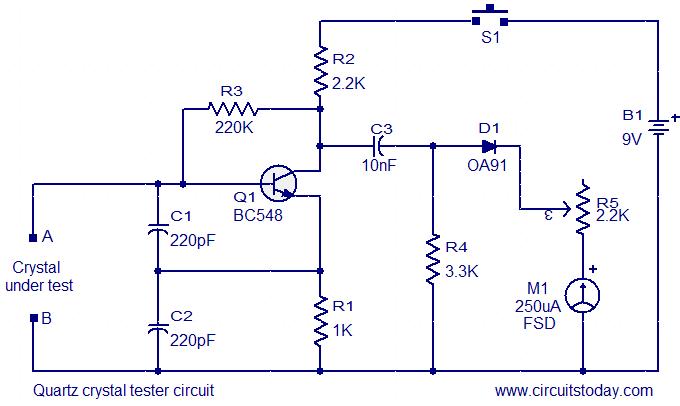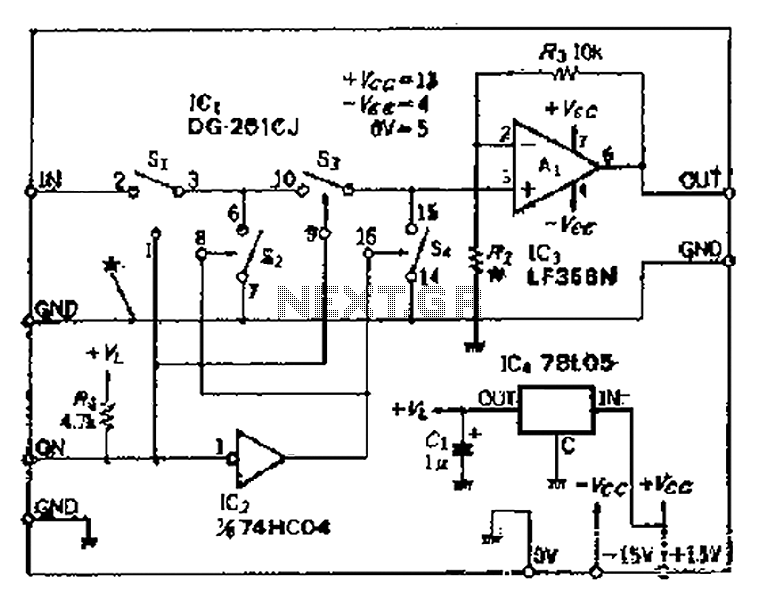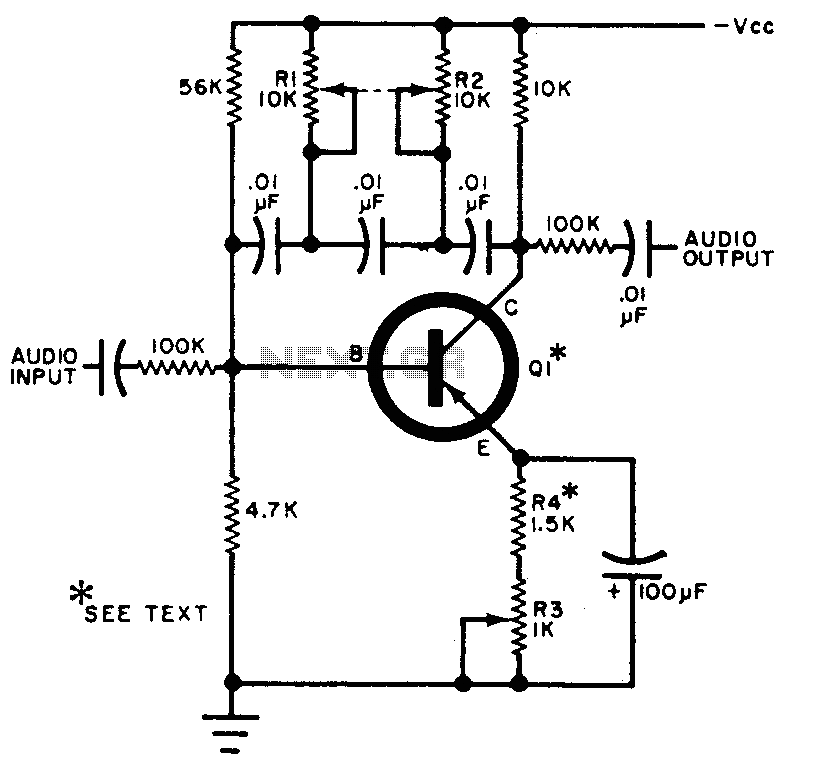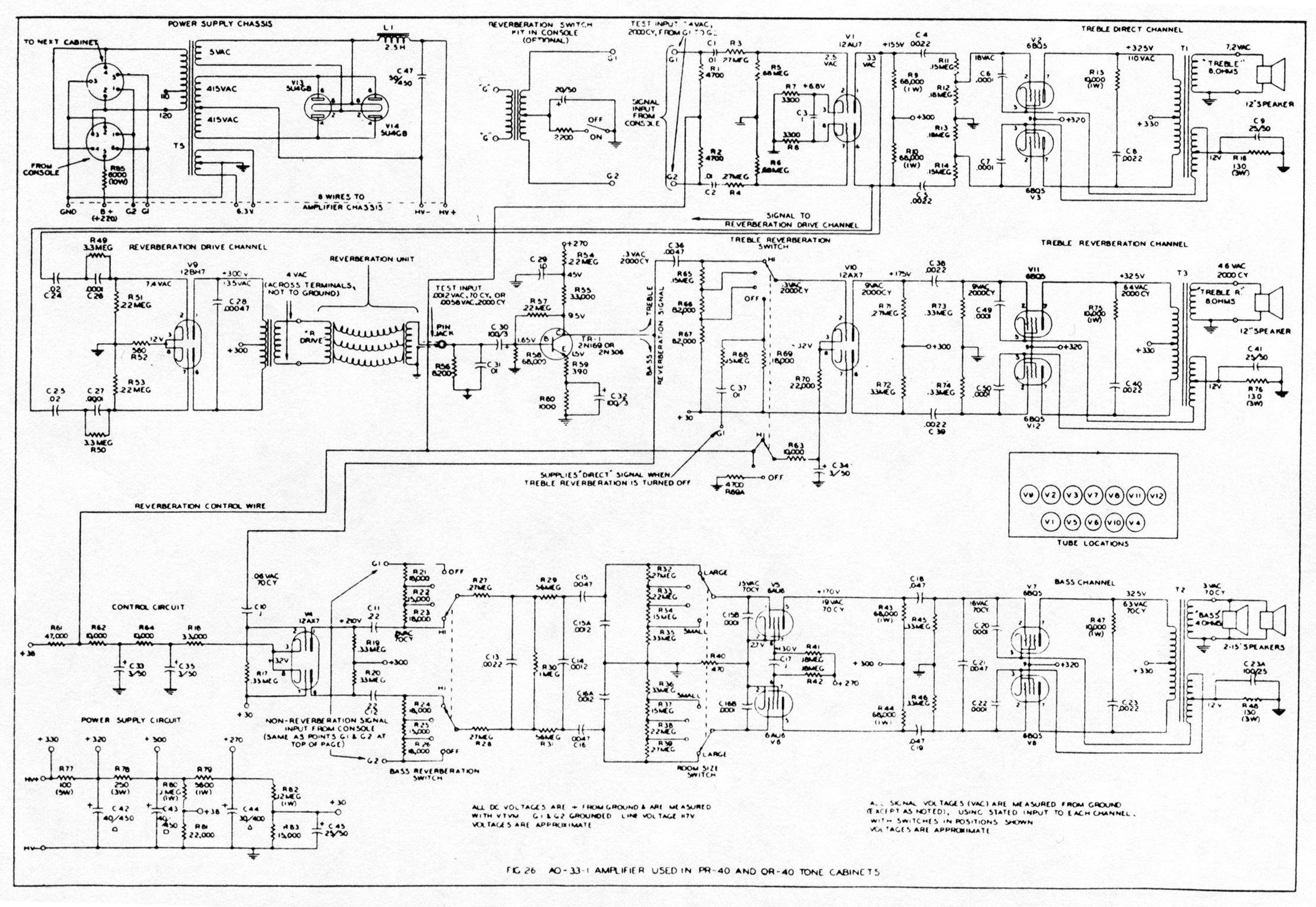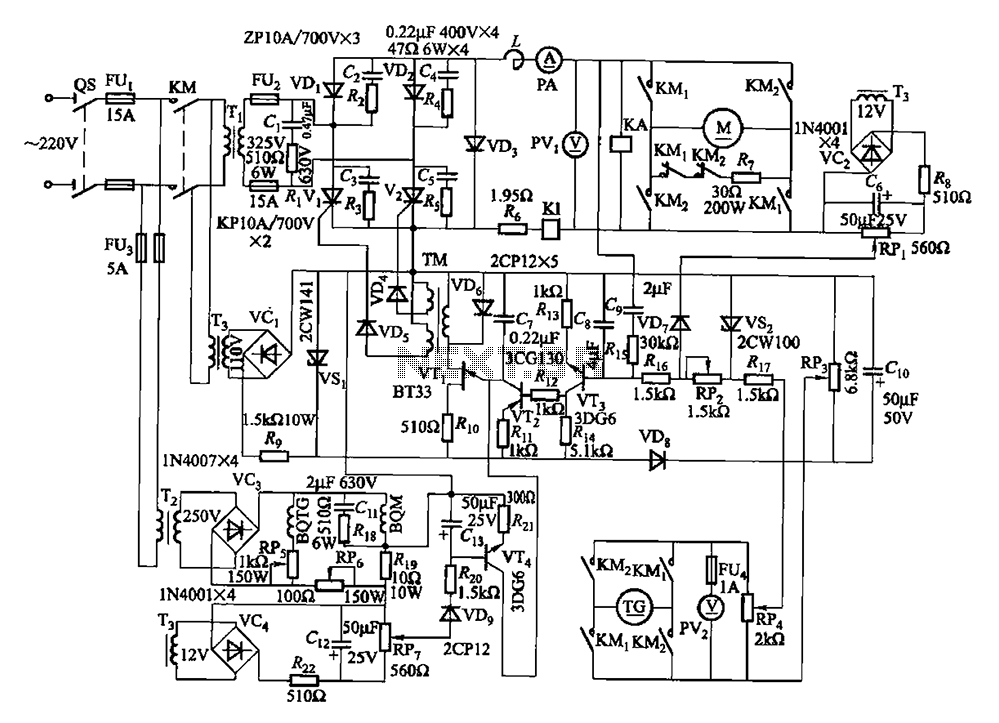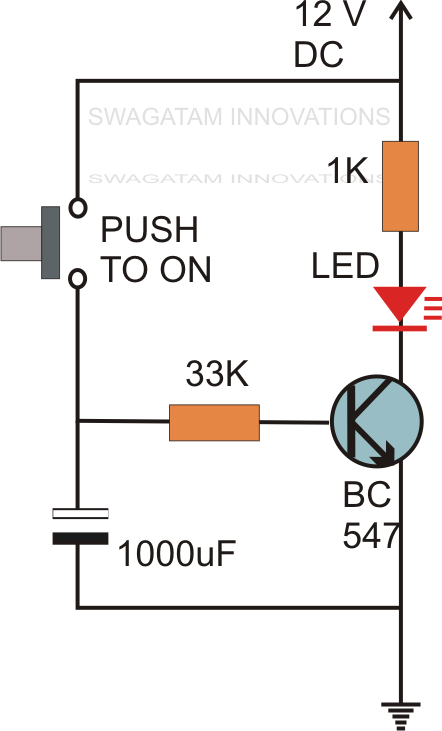
Wireless IR Headphones circuit
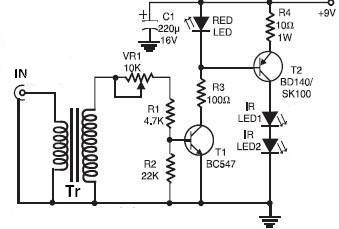
This wireless infrared (IR) headphones circuit project enables the transmission of audio signals through an infrared connection. The circuit consists of two main components: a transmitter and a receiver. Unlike radio frequency (RF) transmitters, both parts of this application must be designed separately. The infrared audio signal transmitter allows for the construction of cordless headphones, which can be particularly beneficial when used with televisions or other electronic devices that may disturb others. The system operates effectively over a range of approximately 6 meters without the need for specialized devices. The transmitter circuit incorporates an output transformer (configured in reverse) to couple the television to the IR transmitter. Transformers T1 and T2 are utilized to amplify the audio signal from the audio transformer. The IR receiver module features a three-stage transistor amplifier, while the VR2 potentiometer is employed to fine-tune the clarity of the audio. For optimal efficiency and maximum range, the photo-transistor should be directed towards the IR LEDs of the transmitter. Both circuits require a 9-volt DC power supply for operation.
The wireless infrared headphones circuit is designed to facilitate audio transmission in environments where traditional wired headphones may not be practical. The transmitter section captures audio signals from a source, such as a television, and modulates these signals onto an infrared light beam. The use of transformers T1 and T2 enhances the audio signal strength, ensuring that the transmitted audio is clear and intelligible at the receiver end. The output transformer, when used in reverse, acts as a coupling device, effectively linking the audio source to the infrared transmission mechanism.
The receiver section of the circuit is equipped with a three-stage transistor amplifier, which is crucial for boosting the received infrared signals. This amplification is necessary to convert the weak infrared signals back into audible audio signals. The use of a potentiometer (VR2) allows for user-adjustable clarity, accommodating different listening preferences and environmental conditions.
To achieve the best performance, the design emphasizes the alignment of the photo-transistor towards the IR LEDs of the transmitter, maximizing the reception of infrared signals. This alignment is essential for maintaining the effective operational range of up to 6 meters. The entire system is powered by a standard 9-volt DC power supply, making it accessible and easy to integrate into existing audio setups. Overall, this wireless IR headphones circuit offers a practical solution for audio transmission in situations where minimizing disturbance to others is a priority.Using this wireless IR Headphones circuit electronic project you can transmit audio signal using an infrared connection .This wireless IR Headphones circuit diagram electronic project is composed by two parts : transmitter and receiver . This is not an RF transmitter , so you will need to design both parts of application . Using this infrared audio signal transmitter you can build an infrared cordless headphone , that can be very useful if is used with an TV or some other electronics device that can disturb other persons .
Without using some special devices this electronic project can be used over an 6 meters range .The transmitter circuit use an output transformer ( in reverse ) to couple the TV to the IR transmitter . T1 and T2 transformers are used to amplify the audio signal from the audio transformer . The IR receiver module use a three stage transistor amplifier .The VR2 potentiometer is used to adjust the clarity .
To have an high efficiency and a maximum range for this IR circuit direct photo-transistor towards IR LEDs of transmitter . Both of these circuits needs to be powered by a 9 volts DC power supply . 🔗 External reference
The wireless infrared headphones circuit is designed to facilitate audio transmission in environments where traditional wired headphones may not be practical. The transmitter section captures audio signals from a source, such as a television, and modulates these signals onto an infrared light beam. The use of transformers T1 and T2 enhances the audio signal strength, ensuring that the transmitted audio is clear and intelligible at the receiver end. The output transformer, when used in reverse, acts as a coupling device, effectively linking the audio source to the infrared transmission mechanism.
The receiver section of the circuit is equipped with a three-stage transistor amplifier, which is crucial for boosting the received infrared signals. This amplification is necessary to convert the weak infrared signals back into audible audio signals. The use of a potentiometer (VR2) allows for user-adjustable clarity, accommodating different listening preferences and environmental conditions.
To achieve the best performance, the design emphasizes the alignment of the photo-transistor towards the IR LEDs of the transmitter, maximizing the reception of infrared signals. This alignment is essential for maintaining the effective operational range of up to 6 meters. The entire system is powered by a standard 9-volt DC power supply, making it accessible and easy to integrate into existing audio setups. Overall, this wireless IR headphones circuit offers a practical solution for audio transmission in situations where minimizing disturbance to others is a priority.Using this wireless IR Headphones circuit electronic project you can transmit audio signal using an infrared connection .This wireless IR Headphones circuit diagram electronic project is composed by two parts : transmitter and receiver . This is not an RF transmitter , so you will need to design both parts of application . Using this infrared audio signal transmitter you can build an infrared cordless headphone , that can be very useful if is used with an TV or some other electronics device that can disturb other persons .
Without using some special devices this electronic project can be used over an 6 meters range .The transmitter circuit use an output transformer ( in reverse ) to couple the TV to the IR transmitter . T1 and T2 transformers are used to amplify the audio signal from the audio transformer . The IR receiver module use a three stage transistor amplifier .The VR2 potentiometer is used to adjust the clarity .
To have an high efficiency and a maximum range for this IR circuit direct photo-transistor towards IR LEDs of transmitter . Both of these circuits needs to be powered by a 9 volts DC power supply . 🔗 External reference
